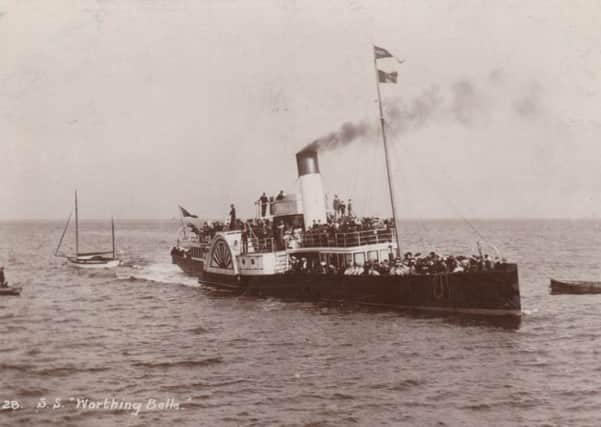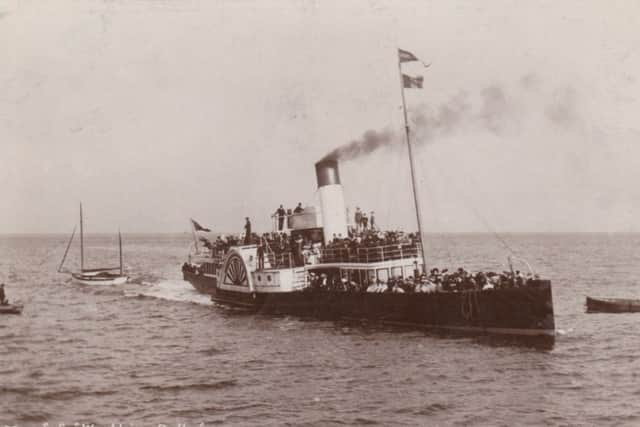‘Just a P. C. of the boat we went to Worthing in on Tuesday night’


Originally called Diana Vernon, she was one of a number of paddle steamers built for the company over a five-year period. She measured 180 feet in length and was coal-fired.
Others in the fleet included Meg Merrilies, Jeanie Deans and Lucy Ashton – all, like Diana Vernon, named after characters in the Waverley novels of Walter Scott.
Advertisement
Hide AdAdvertisement
Hide AdDiana Vernon served in the upper reaches of the Firth of Clyde, sailing from Craigendoran (now a suburb of Helensburgh) into Gare Loch and Holy Loch.


Then, in 1899, she was replaced by the newly-built Waverley, and two years later she was sold to Mr J. Lee of Shoreham-by-Sea, who renamed her Worthing Belle.
Worthing Belle’s “home port” was Brighton’s West Pier, from where she was employed on trips west to Worthing, Littlehampton and Bognor, and east to Eastbourne and Hastings, as well as on short excursions into the Channel.
In 1909, Worthing Belle was acquired by William Reid, whose grandson, Phil Hayden, still lives in Worthing.
Advertisement
Hide AdAdvertisement
Hide AdReid continued with the same schedules and added occasional trips to Boulogne.
During the whole period of her service on the South Coast, Worthing Belle was commanded by Captain John Trenance.
A 1913 postcard showing Captain Trenance and the crew of the Worthing Belle can be seen at http://freespace.virgin.net/tom.lee/trenance.htm
Worthing Belle was the last privately-owned steamer to remain in competition with paddlers operated by the large Bristol firm of P & A Campbell, whose fleet before the Great War consisted of about 20 steamers.
Functions
Advertisement
Hide AdAdvertisement
Hide AdMost of the above information comes from Tom Lee’s paddle steamer website, and is printed with his kind permission. He, in his turn, had much of the information from Phil Hayden.
Tom also very kindly read through the first version of this article, and corrected several errors.
Knowing little about the way paddle steamers were deployed, I asked Tom whether their use was primarily for holiday excursions, or whether they served other purposes.
He explained that paddle steamers were first extensively used in Scotland, where they served numerous functions; and that this originally applied in our region too.
Advertisement
Hide AdAdvertisement
Hide Ad“Several of the South Coast steamers,” he continued, “acted as ferries, as well as being used for pleasure trips; and there was fierce competition for the Royal Mail franchises, carrying post and parcels to the Continent.
“Some paddle tugs, normally used for towing, would do ‘trips around the bay’ and so on during the summer season.
“PS Lord Elgin, originally a pleasure steamer, was later converted to carry cargo, and was even used to carry the elephants and big cats to the Isle of Wight when the circus went there.
“In and around the large liner ports like Southampton, the paddlers were often used as tenders to the liners, ferrying out passengers and supplies. Presumably this was cheaper than paying port dues. They also had distinguished service in both world wars.
Advertisement
Hide AdAdvertisement
Hide Ad“Latterly, the better-known boats of our region, like Worthing Belle, were almost exclusively pleasure steamers.
“However, a poor weather season reduced revenues so much – and refurbishment and maintenance costs were